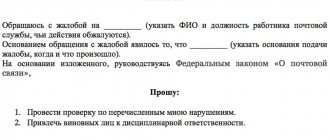When the alimony payer does not fulfill his obligations voluntarily, it may be necessary to collect money from him retroactively. You can wait 3 years for what was promised, but it’s better not to delay it. Children need to be fed, educated and treated. If you are in doubt whether you can apply for alimony retroactively, look at the Family Code. You will see that the law is on the side of alimony recipients.
To collect alimony for the past period, you need to go to court. To do this, you will have to write an application, attach the necessary documents and collect evidence. To ensure that the procedure for receiving alimony does not drag on for a long time, you need to do everything correctly right away. Family law experts will help you with this.
How to collect alimony “retroactively”?
Retroactive alimony is awarded from the date of application to the court and can be recovered for the past period within a three-year period from the date of application to the court.
It is necessary to prove to the court that before going to court, measures were taken to obtain funds for maintenance, but alimony was not received due to the evasion of the person obligated to pay alimony from paying it, as well as to calculate alimony for the past period.
To receive retroactive alimony, you must file a claim with the court. In accordance with the provisions of Art. 107 of the RF IC, “if the court establishes that before going to court, measures were taken to obtain funds for maintenance, but alimony was not received due to the evasion of the person obligated to pay alimony from paying it, alimony can be recovered within a three-year period from the date of application to court ".
Therefore, in the statement of claim, it is necessary to focus on the fact that you took all possible measures to collect alimony, but the other parent evaded payment, so you are collecting alimony retroactively.
Filing a statement of claim for the assignment of alimony payments for the past period
The statement of claim must be drawn up in compliance with the requirements set forth in Articles 131 and 132 of the Civil Procedure Code. It must contain the following information:
- name of the judicial authority conducting the proceedings, its address;
- information about the plaintiff and defendant (name, surname, patronymic, registration and residence address, telephone number);
- the price of the claim, that is, the amount that the claimant asks to accrue to the defendant for the past period;
- content of the document. It must reflect information about the child, the relationship between the parents, the lack of financial and other assistance from the father;
- the amount of alimony being collected with the justification for the specified amount, as well as the period of collection;
- the legal framework on which the plaintiff bases his claims;
- an appendix indicating the list of documents that are attached to the claim;
- date and signature of the applicant.
In order for the application to be considered by the court, it is necessary to pay the state fee for filing a claim containing claims of an intangible nature. The following documents must also be attached to it:
- A copy of the passport of the plaintiff, defendant (if any).
- A copy of the child's birth document.
- A copy of the marriage registration document (if the relationship was officially registered).
- A certificate from the housing department department (extract from the house register), confirming that the child lives with the claimant.
- Evidence of the second parent's evasion of the maintenance of the minor.
- Certificate of income of the plaintiff and defendant.
- Report on child expenses per month.
statement of claim for recalculation of alimony debt here
If necessary, the court may require other documents confirming the position of one or another party.
Filing a claim for alimony for the past period is a fairly common occurrence.
The main thing for the plaintiff is to prepare evidence confirming that the applicant tried to reach an agreement with the defendant, but the latter deliberately did not fulfill his duties.
In this case, the court will collect all debts on alimony payments and award further payment of money for child support.
Your rating of the article
Features of alimony issued retroactively
How to collect alimony “retroactively”?
- Proof. To receive retroactive alimony, you must file a claim in court. In court, you must prove that you made attempts to obtain child support from the second parent, but he evaded the obligation to pay it.
How much alimony can be collected retroactively?
- Amount and period. It is possible to recover a “round” amount, since alimony can be recovered within a three-year period from the date of going to court.
Basic information
If the man did not pay alimony, and the mother did not try to get financial assistance from her ex-husband, then, if necessary, she has the right to go to court to establish alimony payments. Funds will begin to be transferred from the day the claim is filed.
When a woman made attempts to obtain alimony from the child’s father, but the man did everything to hide from financial obligations, then she has the right to collect alimony for the past 36 months. During the trial, she will need to provide evidence that she really tried to get financial support for the child from the man.
Thus, if the parents did not enter into an alimony agreement and did not go to court about this after the divorce, and the man continues to help his former family, then he is recommended to keep all receipts and receipts for expenses - this will help him in possible legal proceedings in the future.
If you paid alimony, but they collect it retroactively?
There are often cases when one of the parents acts in bad faith, namely, tries to collect child support retroactively, when you actually paid child support.
The solution in this situation would be to prove to the court that alimony was paid earlier, this could be:
- Bank statement.
- Receipt for cash receipt.
- Payments under an alimony agreement (in this case, collection of alimony on the above grounds is not allowed).
- Witness's testimonies.
- Other checks and evidence that will confirm the fact of payment of alimony.
Arbitrage practice
Based on an analysis of various situations, we can conclude that claims for retroactive recovery are most often partially satisfied.
If a woman does not provide significant evidence that she tried to agree on maintenance during the 3 years preceding the filing of the claim, then the court will not be able to side with her.
In addition, judicial practice does not provide for the consideration of cases when applications are submitted after the child reaches the 21st birthday. In this case, the statute of limitations has expired and the claim will not be considered.
The procedure for collecting alimony
Alimony for the past is collected in the following order:
- It is necessary to obtain a refusal to fulfill alimony obligations from the second parent, since this is the main component of the norm of Art. 107 RF IC.
- Filing a claim for child support retroactively. The claim can be filed in person in court, through a representative, or sent by mail.
- Receiving a decision in your favor and entering into legal force.
- Voluntary payment of alimony by the second parent or forced collection of debt under a writ of execution.
The process of considering cases of filing an application for retroactive alimony cannot exceed 1 month from the date of filing the statement of claim. At the court hearing, the Plaintiff must prove that the Defendant evaded paying alimony, and you took measures to collect it.
Collecting evidence of the lack of financial and other assistance from the parent
To prove that the child’s father evaded his maintenance, the following methods can be used:
- print messages, letters in electronic or paper versions, other types of correspondence with the defendant, record calls. All this information will help prove that the wife unsuccessfully tried to negotiate help for the child from the father;
- find witnesses who will confirm that the plaintiff tried to negotiate with the payer;
- copy the settlement agreement on the payment of alimony concluded between the spouses, but not executed by the debtor;
- provide papers confirming the debtor’s reluctance to provide financial assistance to the minor. For example, a court ruling to cancel an order of a magistrate. This document is issued if the plaintiff filed for alimony, and the defendant refused to pay it.
If the applicant has other documents confirming the parent’s active evasion of financial and other assistance to the child, they must be provided in full.
Indexation of alimony debt
Indexation of alimony, Art. 117 RF IC.
1. The indexation of alimony collected by a court decision in a fixed sum of money is carried out by the organization or other person to whom the writ of execution (a copy of the writ of execution) was sent in the cases established by part 1 of article 9 and clause 8 of part 1 of article 47 of the Federal Law of October 2, 2007 year N 229-FZ “On Enforcement Proceedings”, or a bailiff within the framework of enforcement proceedings in proportion to the increase in the cost of living for the corresponding socio-demographic group of the population established in the relevant constituent entity of the Russian Federation at the place of residence of the person receiving alimony, and in the absence in the corresponding subject of the Russian Federation, the specified value is proportional to the increase in the cost of living for the corresponding socio-demographic group of the population, established for the Russian Federation as a whole.
2. The amount of alimony collected by a court decision in a fixed sum of money, for the purpose of indexation, is established by the court as a multiple of the subsistence minimum, determined in accordance with the rules of paragraph 1 of this article, including the amount of alimony can be established as a fraction of the subsistence minimum.
The necessary conditions
When filing an application to recover funds for the past period, the plaintiff must provide evidence of attempts to obtain them.
What is the best thing for the plaintiff to do in this case?
Before issuing demands, the claimant must form an evidence base. To this end, the following measures will be required:
- Send a letter to the former spouse’s place of residence indicating the requirements for the fulfillment of alimony obligations, if the agreement was oral. The shipment is sent with mandatory notification and an inventory of the contents.
- Sending messages by email or other means of communication regarding the payment of alimony, including via SMS, on social networks, etc.
- A personal meeting in the presence of strangers who can later confirm in court the fact of making demands for payment of funds for the maintenance of a minor. In this case, it is better not to involve relatives or close people, so that the court does not consider them interested parties and does not treat their testimony critically. It would be reasonable to involve neighbors, having previously obtained consent to testify in court.
- Save audio and video recordings of negotiations between former spouses regarding the payment of alimony.
- If the whereabouts of the child's father are unknown, you will need to contact the relevant authorities with an application to find him. As a subject who has obligations to support his children. Regardless of the result obtained, the applicant will be issued a document confirming the fact that measures have been taken to receive alimony payments.
- If you have previously applied to the court to obtain a court order and it was granted, but subsequently an application was filed to cancel it, then such actions will be regarded as an attempt to obtain support for the children. Such documents must be attached to the application to the judicial authorities.
Expert commentary
Gorbunova Olga
Lawyer
To confirm the measures taken to obtain maintenance from the ex-husband, all collected evidence is presented for study in the trial.
What to do as a defendant
But the opposite situation may also arise in which, in accordance with an oral agreement, the father sends money to his ex-wife for the maintenance of the children. But the latter, for whatever reason, goes to court, declaring that the payer is not fulfilling his alimony obligations. To protect yourself from unfounded possible claims, the ex-spouse needs to take appropriate actions:
- Any transfer of funds during personal interaction must be accompanied by a receipt indicating the data of both parties, the amount of the amount received and the purpose of payment, date and signature. You can pre-compile forms where the recipient will simply enter the amount, period and signature/date every month.
- When transferring money by bank or postal transfer, through a terminal or payment systems, it is imperative to indicate for what purpose the funds are being sent, for example, “child support”, his full name, term. Such checks and receipts must be kept for at least three years.
- If the child’s parents have agreed that instead of issuing money, food and necessary items will be purchased, or payment will be made for the child’s attendance at school, sports section, preschool, etc., then it is necessary to keep payment documentation confirming the fact of the costs. If they do not indicate the purpose of payment, then you will need to insist on entering such information or issuing a sales receipt.
Recommendations for the defendant (payer)
Sometimes it happens that an unscrupulous other half may try to get more money (when we talk about the other half, we mean both the wife and the husband). In order to guard against this, we recommend collecting reporting materials regarding the transfer of funds. It can be:
- a receipt from the alimony recipient confirming receipt of money;
- receipt of money transfer;
- an extract from a bank card about transactions performed, which shows the moment of payment of alimony;
- checks, receipts for payment of contracts for sections, purchases of clothing and other expenses for the child.
Expert opinion
Viktor Evgenievich
Representative of a private law firm, work experience - 7 years
We should also not forget about the witnesses; they are good both on the part of the plaintiff and on the part of the defendant.
Well, it’s better, of course, to just have a documentary base so that you don’t have to drag strangers into family squabbles.
Only words
To answer this question, we will consider each method of receiving alimony payments. Let's start with the least secure insecure method. We are talking about an oral agreement between the recipient of financial assistance and the payer.
This is the receipt of funds retroactively, but such a decision cannot be called a collection. The parties simply agree on financial support. The words in the situation under study have no legal force. Even if the agreement was made through correspondence in the messenger.
After the recipient of alimony and the payer have discussed the specifics of the payments, all that remains is to rely on the conscience of the alimony payer. He will either pay retroactively or refuse to pay. And there is no way to collect the debt under such circumstances.









